Types of Periodontal Disease
Types of Periodontal Disease
Periodontal disease, commonly known as periodontitis and gum disease, is a chronic condition that damages the jawbone beneath the gums as well as the tissue that supports and surrounds the gums. Periodontal disease can cause loose, unstable teeth as well as tooth loss if it is not treated.
In the industrialised world, periodontal disease is the main reason why adults lose their teeth, so it should not be ignored.When the soft, or gingival, tissue surrounding the teeth begins to be attacked by the toxins included in plaque, periodontal disease develops.
A bacterial infection is brought on by this bacterium, which quickly multiplies and embeds itself in the gum. The inflammation or discomfort between the teeth and gums increases as the infection spreads deeper into the tissue. The gums appear to recede because the body's reaction is to eradicate the diseased tissue. If no treatment is sought, the ensuing spaces between the teeth widen and the jawbone's supporting tissue recedes, resulting in unstable teeth and tooth loss.
Periodontal disease types
Periodontal disease comes in a wide range of forms, each of which can express itself in various ways. To stop the progression and preserve the bone and gum tissue, all of these conditions require prompt treatment by a periodontist.
Here are some of the most prevalent forms of periodontal disease and the usual treatments used to treat them:
Gingivitis
The most prevalent and mildest type of periodontitis is gingivitis. It results in periodontal disease and is brought on by the poisons in plaque. Pregnant women, women taking birth control pills, people with uncontrolled diabetes, steroid users, and people who use medicine to control their seizures and blood pressure are at an increased risk of getting gingivitis.
Treatment: A good mix of at-home maintenance and expert cleaning can effectively reverse gingivitis. To clear the pockets of dirt, the dentist may do root planing and thorough scaling operations. To eliminate any leftover germs and encourage good healing of the pockets, a combination of antibiotics and medicated mouthwashes may be employed.
Periodontal Chronic Disease
The most prevalent type of periodontal disease is chronic, and people over 45 are much more likely to develop it. Inflammation below the gum line and the gradual deterioration of the gingival and bone tissue are the hallmarks of chronic periodontal disease. Although it may seem that the teeth are getting longer, the gums are actually receding.Unfortunately, unlike gingivitis, chronic periodontal disease cannot be fully reversed because the supporting tissue is irreparably damaged.
However, the dentist can slow the spread of the condition by combining antimicrobial therapies with scaling and root planing operations. To strengthen the bone and enhance the aesthetics of the oral cavity, the periodontist may undertake surgical procedures such as pocket reduction surgery and tissue grafts.
Intensive Periodontitis
Rapid loss of bone tissue, gum attachment, and familial aggregation are the hallmarks of aggressive periodontal disease. The illness itself is very similar to chronic periodontitis; however, it progresses considerably more quickly. Aggressive periodontitis has a higher risk among smokers and people with a family history of the condition.
Treatment: Patients with aggressive periodontal disease are much more likely to need surgical intervention than those with chronic periodontal disease, but both conditions can be treated. The dentist will use scaling, root planing, antibacterial, and, in some cases, laser techniques in an effort to preserve priceless tissue and bone, even though this version of the disease is more difficult to prevent and treat.
Periodontal disease and systemic disorders
Periodontal disease may be a sign of another illness or ailment that affects the body as a whole. The illness may behave like an aggressive form of periodontal disease, destroying tissue quickly, depending on the underlying condition. The most frequent cofactors, while there are many others, include cardiovascular disease, diabetes, and respiratory disorders.
Numerous illnesses exacerbate and hasten the evolution of periodontal disease, even when there is little plaque on the teeth.
Treatment: The underlying medical problem that gave rise to periodontal disease must first be under control. The dentist will use the same procedures for managing aggressive and chronic periodontal disease to stop the disease's progression.
Periodontal Necrotizing Disease
This type of illness worsens quickly and is more common in those who smoke, have HIV, are immunosuppressed, have malnutrition, experience chronic stress, or choose to be underweight. The alveolar bone, gingival tissues, and periodontal ligament are frequently affected by tissue death (necrosis).
Treatment: Necrotizing periodontitis is a very rare condition. The dentist would likely speak with a doctor before beginning therapy because it could be linked to HIV or another serious medical disease. This type of disease is typically treated with scaling, root planing, antibiotic pills, medicated mouthwash, and fungicidal medications.






